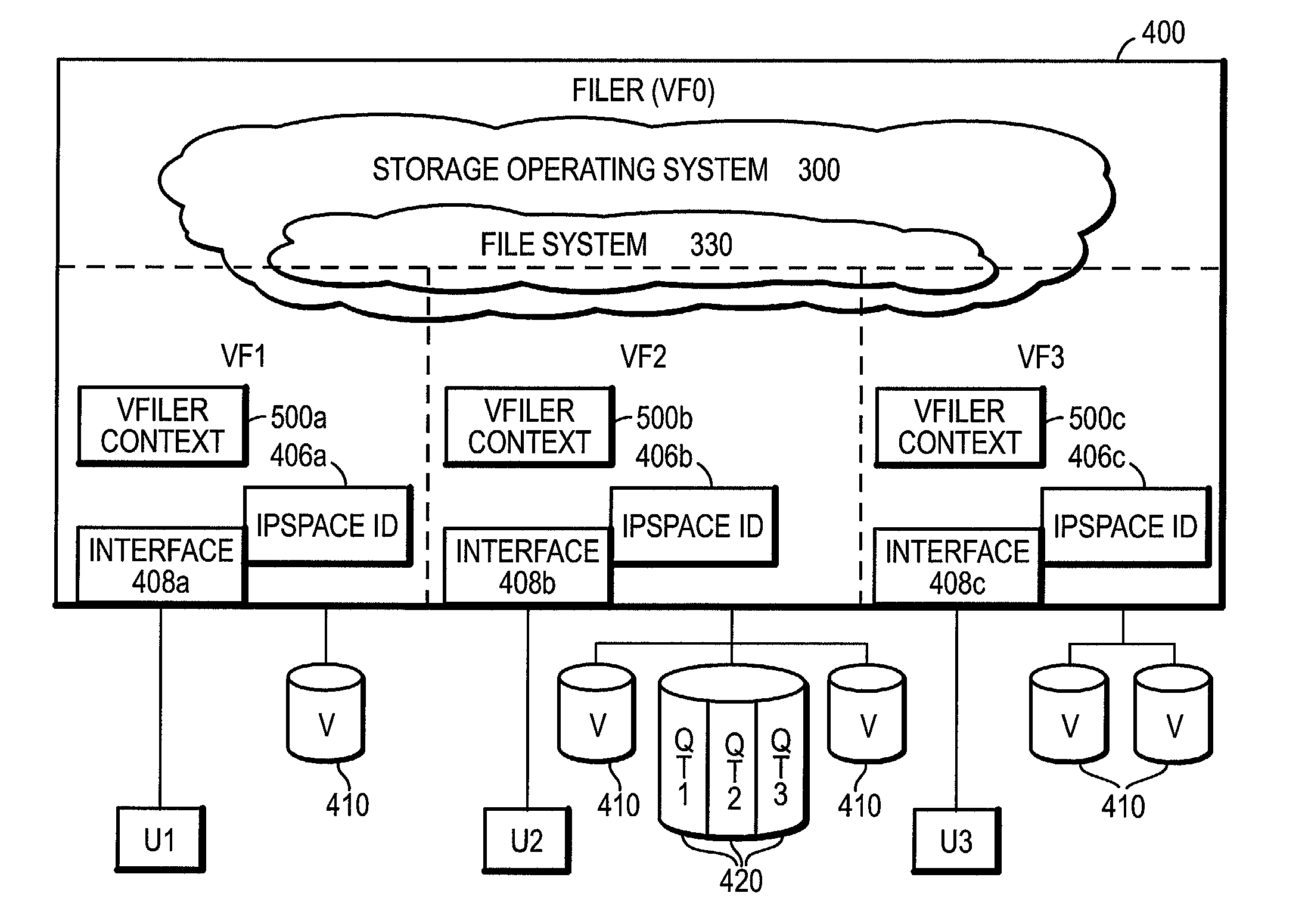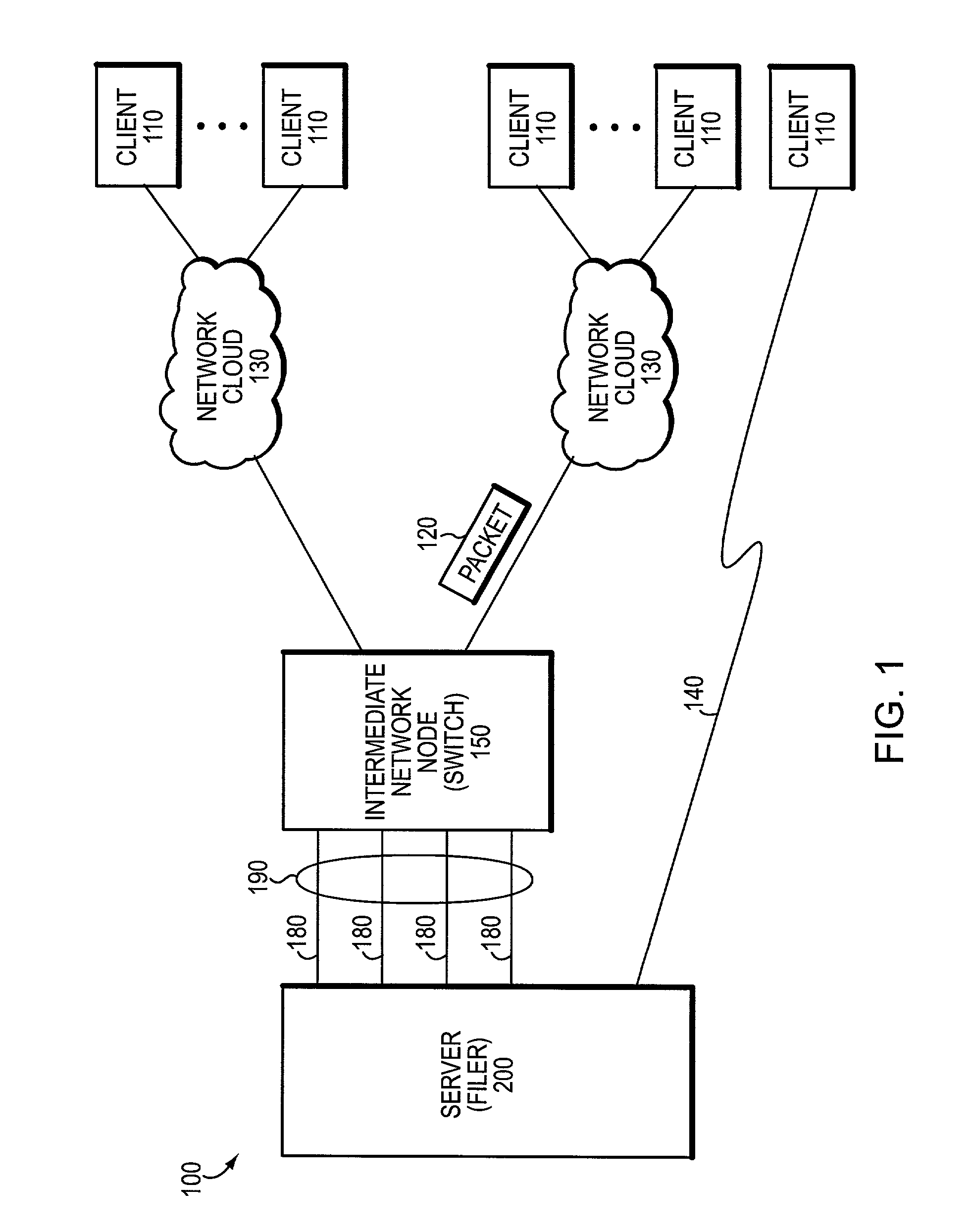Architecture for creating and maintaining virtual filers on a filer
a filer and virtual file technology, applied in the field of server architectures, can solve the problems of granularity of storage, large size of storage system types, and high cost of many applications or “purposes”
- Summary
- Abstract
- Description
- Claims
- Application Information
AI Technical Summary
Benefits of technology
Problems solved by technology
Method used
Image
Examples
Embodiment Construction
[0038]FIG. 1 is a schematic block diagram of a computer network 100 including a plurality of clients 110 and a file server, such as a network storage appliance, that may be advantageously used with the present invention. The file server or filer 200 is a computer that provides file service relating to the organization of information on storage devices, such as disks. The clients 110 may be general-purpose computers configured to execute applications including file system protocols, such as the conventional Common Internet File System (CIFS) and Network File System (NFS) protocols. Moreover, the clients 110 may interact with the filer 200 in accordance with a client / server model of information delivery. That is, each client may request the services of the filer, and the filer may return the results of the services requested by the client, by exchanging packets 120 encapsulating, e.g., the CIFS and NFS protocol formats over the network 100. It will be understood to those skilled in th...
PUM
 Login to View More
Login to View More Abstract
Description
Claims
Application Information
 Login to View More
Login to View More - R&D
- Intellectual Property
- Life Sciences
- Materials
- Tech Scout
- Unparalleled Data Quality
- Higher Quality Content
- 60% Fewer Hallucinations
Browse by: Latest US Patents, China's latest patents, Technical Efficacy Thesaurus, Application Domain, Technology Topic, Popular Technical Reports.
© 2025 PatSnap. All rights reserved.Legal|Privacy policy|Modern Slavery Act Transparency Statement|Sitemap|About US| Contact US: help@patsnap.com



